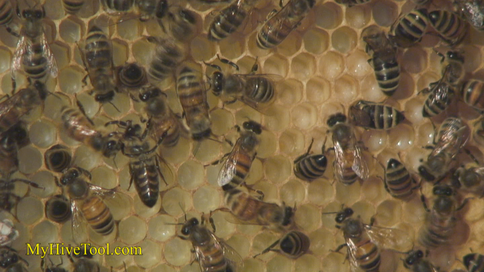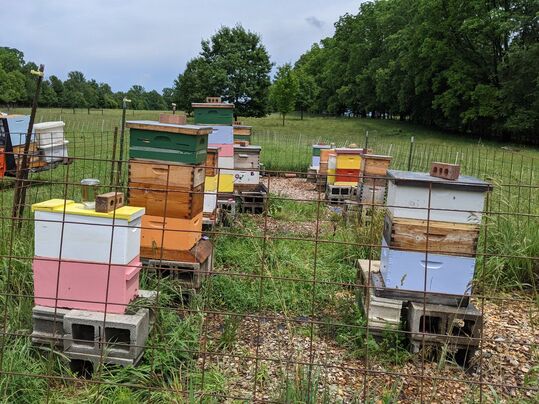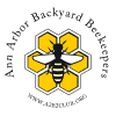 Appropriate Healthy bee brood is located in the “brood chamber” in the middle of the hive. These frames typically are either wall-to-wall capped brood (in spring or summer) or have brood in the middle, followed by a layer of pollen, with honey in the corners. A healthy brood pattern is solid, not spotty, and healthy larvae are plump, white grubs floating in large pools of white royal jelly. When the pupae are capped with wax, the caps are slightly raised and dark yellow without any perforations. The caps darken to tan as the pupae ages. Bad There are many bee brood diseases: sacbrood, chalkbrood, snotty brood, European Foulbrood, and American Foulbrood, etc. Varroa mites also feed on bee brood and replicate inside capped pupal cells. The most serious brood disease is American Foulbrood or AFB which is an extremely contagious, almost impossible to kill, and fatal disease in honey bees which may require you to burn your hive to control its spread. Signs of brood disease include (but are not limited to) spotty brood, twisted larvae, “skeletal” larvae, discolored larvae, pointy larvae, dry and mummified larvae, goopy larvae, sunken caps, discolored/caramel-colored caps, perforated caps, bald brood (pupae that have no caps), black scales inside of brood cells, a bad smell, and white crystals inside brood cells. Cycle The life cycle of all castes of bees is similar, but has a slightly different time scale. All bees are eggs for 3 days, and larvae for 6 days. The queen is then a pupae for only 6 or 7 more days (15-16 days total). The workers are pupae for 12 days (21 days total). The larger drones are pupae for 15 days (24 days total). The bees then emerge from their cells as fully-formed adults and do not grow any more. Queen = ~16 days from egg being laid to emergence (eclosure) from cell as an adult Worker = 21 days Drone = 24 days More Information: https://bee-health.extension.org/bee-brood-basic-bee-biology-for-beekeepers/
0 Comments
Leave a Reply. |
AuthorJen Haeger is a new master beekeeper and board member of A2B2. Archives
August 2022
Categories
All
|


 RSS Feed
RSS Feed
